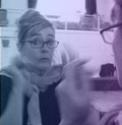Call for Proposals: "On Blood"

Proposal Deadline: 19 January 2022
Issue Editors: Sarah Crews (University of South Wales) and P. Solomon Lennox (Northumbria University)
Blood is powerfully evocative. Bloodied and bleeding bodies have the potential to elicit feelings of disgust, anxiety and empathy. David Harradine argues that blood ‘is perhaps the most metaphorically loaded body fluid’ (2000: 80). Blood has special qualities as a bodily substance, material and metaphor. The many meanings of blood are, for Janet Carsten, ‘paradoxically both under- and over-determined’ (2013: S2). Blood may be associated with ‘fungibility, or transformability, as well as essence; with truth and transcendence and with lies and corruption; with contagion and violence but also with purity and harmony; and with vitality as well as death’ (ibid.). Carsten draws attention to the ‘literal uncontainability of blood’ (2013: S4) on account of its ability to function ‘as a vector between domains that in other contexts are actively kept apart’ (2011: 20).
Blood is polyvalent; it moves, flows, transfers, is pumped, and pours, but it also sticks, plugs, clots and coagulates. The visibility of blood exposes the fragility of boundaries and the permeability of bodies, offering both a fluid potentiality and a threat. The fluidity of blood challenges the notion of stable systems. The many meanings ascribed to blood are far from stable or self-evident. Through a performance studies lens, this issue invites interdisciplinary discussions and new perspectives on how blood is read and positioned as a bodily substance, material property and metaphor in disciplines such as medical humanities, sociology, sports science, theatre studies and medical sciences.
Blood and performance enjoy a strong and rich history. From the body art movement of the 1960s and 1970s to work produced in the early 2000s, artists have engaged with the material substance of their blood. The work of Kira O’Reilly, Ron Athey and Franko B (among others) brings into play the biological qualities of human bodies, medical processes and immunology. Manica and Rios (2017) introduce the term menstrual performances to address the long history of artists (such as Shigeko Kubota’s 1965 Vagina Painting) who make menstrual blood visible and re-frame it as a ‘potent aesthetic and political agent’ (Manica and Rios 2017: 2). In making blood visible in performance, these artists expose the fragility of bodies as bounded systems and foreground the vulnerability of these systems (Harradine 2000). Blood as a communicative and expressive medium confronts what may otherwise be hidden, considered taboo and/or a pollutant. For Mary Richards, the staging of the bleeding body as a corporeal reality is provocative because it counters efforts that seek to distance, contain or mask ‘the bloody reality of our interiors’ (2008: 109). While there is a ‘radical fluidity’ within performances engaged with staging blood (Harradine 2000), the exposed bodily borders and messy uncontainable interiors need not threaten subjectivity. As Helen Pynor (2016) observes in her work with transplant patients, organs and blood donors, blood can enact the dissolution of binaries, such as the self–the other, the living–the dead. In performance work with blood, there remains a negotiation between subjectivication and desubjectivication. For Rosemarie Brucher (2019) the bleeding wounds of the body art artist invite this negotiation precisely through the rupturing of the artist’s own objectiveness.
Blood has the power to call into question that which is real, really real, and pretend. In an act called ‘blading’, professional wrestlers open self-inflicted wounds on their forehead with otherwise concealed razor blades. In doing so, they bleed for their audience, producing ‘a much more authentic performance’ of pain (Hadley 2017: 158). Chow, Laine and Warden (2017) recruit the act of blading to tease out the tensions between theatre and performance, between wrestling as a ‘fake’ contest, but the razor blade (and by extension the blood) as real (see Chow, Laine and Warden 2017: 3). For Chow, Laine and Warden, the apparatus used to visibly inflict pain in professional wrestling (the chair, the ladder) ‘move back and forth between the “really real” and pretend’ (2017: 4). Items like the chair and the ladder are always a chair or a ladder, but also something more, as they are ‘imbued with latent violence’ (3). Blood as a boundary breaching polyvalent substance is arguably always something more than just blood. Carsten (2013) details how in working towards theories of blood, a recurrent theme is blood as truth-bearing. Processes wherein blood is made visible are believed to reveal a particular ‘truth’ about an individual (moral, personal, political, medical, racial). The meanings ascribed to blood, how it performs, and how it is received, carry heavy and powerful connotations in need of critical attention.
The symbolic status of blood and of bleeding bodies requires further attention. If, as Mary Richards argues, the bleeding body of Christ in the crucifixion opens a channel of divine communication between humans and God, then the corporeal reality of the bleeding body in performance opens up a ‘potent and intense channel of communication’ between spectator and performer, creating ‘intimacy and immediacy through the psychic shocks offered by the presence of flowing blood’ (2008: 111). This volume asks what ‘truths’ are made visible by the presence of blood? What is exposed and what remains hidden when blood flows? How might the movement (or lack thereof) of blood help us unpack important questions concerning health, well-being, performance and storytelling? To what end then can scholarly considerations of blood challenge or uphold heteronormative systems and discourse? The polyvalence and plasticity of blood mark it as an important bodily substance with particular material qualities and transformative propensities. How might blood be understood and what potentials does it promise?
Potential Topics
- New perspectives on Menstrual Art
- Blood/Bleeding as performance
- Theatricality of staged bleeding bodies
- The politics and ethical considerations of blood
- Blood and ritual in performance
- Interdisciplinary connections between art and science
- Blood in relation to other bodily fluids
- The narrative function of blood in culture, art and performance
- Blood as having transformative impact on cultural narratives of bodies
- Blood in sport and sporting culture as performance
- Blood and stigma in relation to identities and cultures
- Blood and temporality in/as performance
- Re-evaluations of the productivity of blood
- What does the presence of blood reveal in/as performance?
Format
Please send 300 to 400 word abstracts (with a 100 word author bio) for critical essays, artist pages, interviews, practice-research essays or provocations that attend to (but are not limited to) any aspect of the above.
Due to the nature of this issue, we anticipate attracting interdisciplinary contributions from possible areas, such as performance studies, medical humanities, sociology, sports science, performance art, theatre studies and medical sciences. We wish to actively encourage proposals for contributions outside of traditional academic essays, including artist pages, image-based articles and interviews.
Issue Contacts:
ALL proposals, submissions and general enquiries should be sent direct to Performance Research at: info@performance-research.org
Issue-related enquiries should be directed to the issue editors:
Sarah Crews (University of South Wales) sarah.crews2@southwales.ac.uk
Solomon Lennox (Northumbria University) solomon.lennox@northumbria.ac.uk
Schedule:
- Proposals: January 19, 2022
- First drafts: April 2022
- Final drafts: July 2022
- Publication: December 2022
References
Brucher, Rosemarie (2019) ‘Self-injuring body art: Strategies of de/subjectivation’, New German Critique 46(2(137)): 151–70.
Carsten, Janet (2011) ‘Substance and relationality: Blood in contexts’, Annual Review of Anthropology 40: 19–35, DOI: 10.1146/annurev.anthro.012809.105000.
Carsten, Janet (2013) ‘Introduction: Blood will out’, Journal of the Royal Anthropological Institute 19(S1), DOI: 10.1111/1467-9655.12013, pp. S1–S23.
Chow, Broderick, Laine, Eero and Warden, Claire, eds (2017) Performance and Professional Wrestling, London: Routledge.
Hadley, Jamie Lewis (2017) ‘The hard sell: The performance of pain in professional wrestling’, in Broderick Chow, Eero Laine and Claire Warden (eds) Performance and Professional Wrestling, London: Routledge, pp. 154–62.
Harradine, David (2000) ‘Abject identities and fluid performances: Theorizing the leaking body’, Contemporary Theatre Review 10: 69–85, DOI: 10.1080/10486800008568597.
Manica, Daniela and Rios, Clarice (2017) ‘(In)visible blood: Menstrual performances and body art’, Vibrant: Virtual Brazilian Anthropology 14, DOI: 10.1590/1809-43412017v14n1p124.
Pynor, Helen (2016) ‘On the emergent properties of death: When worlds fall apart’ in Alex Mermikides and Gianna Bouchard (eds) Performance and the Medical Body’ London: Bloomsbury Methuen Drama, pp. 173-89.
Richards, M. (2008) 'Specular suffering: (Staging) the bleeding body’, PAJ: A journal of performance and art 30(1): 108–19, ISSN: 1520-281X.
General Guidelines for Submissions:
• Before submitting a proposal, we encourage you to visit our website (www.performance-research.org) and familiarize yourself with the journal.
• Proposals will be accepted by email (Microsoft Word or Rich Text Format (RTF)).
Proposals should not exceed one A4 side.
• Please include your surname in the file name of the document you send.
• Please include the issue title and issue number in the subject line of your email.
• Submission of images and other visual material is welcome provided that all attachments do not exceed 5 MB, and there is a maximum of five images.
• Submission of a proposal will be taken to imply that it presents original, unpublished work not under consideration for publication elsewhere.
• If your proposal is accepted, you will be invited to submit an article in first draft by the deadline indicated above. On the final acceptance of a completed article you will be asked to sign an author agreement in order for your work to be published in Performance Research.






